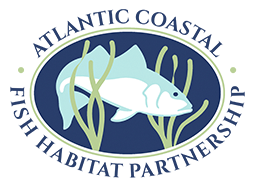The Conservation Strategic Plan is updated every five years and is used as a guidance document for the ACFHP Steering Committee, the Partnership-At-Large, state and federal agencies, and restoration practitioners. The Plan is designed to address goals, objectives, and strategies that the Partnership will focus on to improve the condition of Atlantic coastal fish habitat.
The Action Plan is a subset of the 2022 – 2026 Conservation Strategic Plan. It contains a set of objectives, strategies, and related actions that can be accomplished over the course of a two-year period.
The previous Action Plan (2020 – 2021) can be found here.
The ACFHP Business Plan describes the Partnership’s mission, objectives, and past accomplishments, as well as how we can work with donors to achieve their conservation goals. It details our structure, governance, and financial management capacity, and encourages potential donors to partner with ACFHP to improve fish habitat conservation along the Atlantic coast.
The ACFHP Charter and By-Laws describe the management structure and operating procedures of ACFHP. It was written in 2008 and amended twice in 2009.
The Memorandum of Understanding confirms the intent of the signatories to develop and implement ACFHP. It was created in 2008 and has been updated in 2013, 2015, 2019, 2020, 2021, and 2024 as new partners were added.
American Rivers and the Hydropower Reform Coalition are proud to present the Practitioner’s Guide to Hydropower Dam Removal. This is a comprehensive guide for dam owners and practitioners on removing hydropower dams regulated by the Federal Energy Regulatory Commission (FERC). Removing dams is a common practice and a good option for dam owners or licensees who determine that the expense of ownership is too great relative to the benefits provided by their dams. While most hydropower dams continue to serve an important purpose by generating power, many – both publicly and privately owned – have reached the end of their useful life. Those dams can pose public safety risks, impact fish and other aquatic life, and become costly liabilities to their owners. Many are not profitable or require costly repairs and upgrades that push dam owners and licensees to consider removal.
Small Fishway Workshop II – 2024 Northeast Fish & Wildlife Conference
The Small Fishway Workshop II video series showcases expert presentations from the 79th Annual Northeast Fish & Wildlife Conference in Cape Cod, MA, highlighting the design, construction, and evaluation of fishways—especially small-scale structures commonly used in the Northeast. Led by a panel of biologists and engineers, the workshop was organized into three segments covering (1) fish passage design principles, (2) technical solutions, and (3) biological assessments & real-world case studies. Featured speakers include Dr. Alex Haro, Ben Gahagan, Abigail Archer, Bryan Sojkowski, Steve Gephard, and Bjorn Lake.
This report summarizes the focus and priorities of restoration practitioners along the Atlantic coast. The results are from a survey conducted in 2014 and they help ACFHP better understand our priorities and ways to focus our efforts on a regional or coastal scale.
